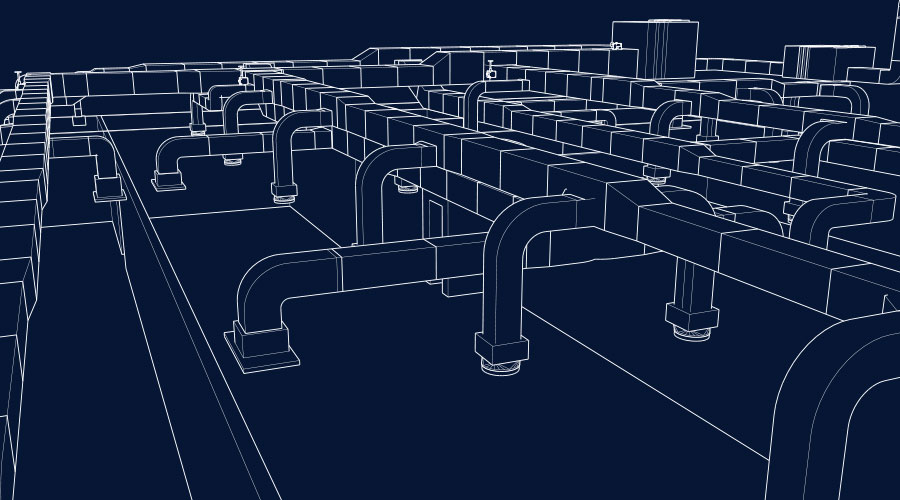How Blockchain Can Improve Real Estate Transactions
By improving efficiencies and access during transactions, blockchain and other digital technologies offer potential for savings for facility managers.
By Farbod Sadeghian, Contributing Writer
In August 2022, Forbes reported that a housing market recession had officially started just a month prior, when the decline in US home sales marked its sixth consecutive month. Builders are struggling to build, with permit applications falling 1.8 percent from June to July 2022 and homes newly under construction falling 9.6 percent in the same period.
The commercial construction and real estate market is struggling as well, with downtown vacancies remaining high post-covid as many organization reevaluate their space needs.. Materials still have record wait times due to the supply chain issues caused by Covid-19, interest rates climb higher and higher, and prospective buyers are once again being effectively driven out of the real estate market.
But even before this year, and well before the Covid-19 pandemic, the construction market was precarious at best. Data tells the tale of a gloomy prospect, but innovative technology will be able to prove decisive and indispensable in the fight against the crisis facing us, resulting in better living conditions and fairer opportunities for all.
A report by 5Jewels Research estimates the role that digital technologies played in preventing around 20 percent of global GDP from being wiped out in 2020. This accounts for a total saving of $17 trillion in favor of the global economy, which tells us something worth highlighting: technology can drive a sustainable economic recovery, and can be harnessed to “enable the widespread integration of renewable energy, make cities more liveable, render transport more efficient and vastly improve healthcare delivery.”
Blockchain, in particular, is a disruptive digital technology with the potential to help solve – or at least, improve – many of the crises of 2022, including the one facing the real estate space.
When talking about barriers to entry to the market, they can be crucially reduced by first-time or would-be buyers taking advantage of fractional ownership to get onto the property ladder in new and ingenious ways. Pooling resources and holding, or trading, part of the property in the form of tokens, allows prospective buyers who feel cut out of traditional forms of investing in real estate to participate within their means, within their possibility. That’s an incredible advantage, especially when it comes to lack of affordable housing and prohibitive entry requirements.
By eliminating the need for a middle man and connecting buyers and sellers directly, blockchain helps both parties reduce costs, cut waiting times, and streamline the buying process. And by virtue of blockchain’s decentralized nature, transactions are fast, immutable, secure, transparent and publicly traceable. As a decentralized registry of publicly accessible data, the possibilities for blockchain utility in the real estate space are almost endless. Blockchain could record property transfer records, or it could be an easy way to sell and transfer shares of a single property. Or again, it could be used to prevent fraudulent developers from falsifying data and records for their own gain.
In a peer-to-peer marketplace, barriers to entry are once again greatly reduced so that investors can buy into the opportunities presented by a specific property, invest in their future appreciation, and begin thinking of real estate assets much in a similar way to that of stocks in the stock market. And when it comes to the hype we’ve seen build around NFTs in 2021 and beyond, their utility in the real estate space hasn’t yet been properly explored. But they could prove another great advantage: their application in real estate could be leveraged to store purchase records on the blockchain, and provide access to every legal document related to the sale or transfer of property in one (secure, immutable, publicly accessible) place.
Last year, according to a study by Nonfungible.com and BNP Paribas-owned research firm L’Atelier, NFT trading grew by 21000 percent compared to 2020, for a total of $17.6 billion in total transactions and a total profit of $5.4 billion. So far, its popularity has been mostly attributed to the NFT-as-artworks craze, but I believe it won’t stop there. In general, blockchain technology allows for the easy division of real estate into smaller virtual fractions; and with effective NFTs and their trading on the blockchain, problems such as lack of liquidity, lack of scalability, and access restrictions can be resolved. This way, we’ll be opening up entire areas of the market to new buyers and new investors who had previously been turned away or shut out completely.
Farbod Sadeghian is the founder of Qlindo, a real estate and energy investment firm.
Related Topics:












